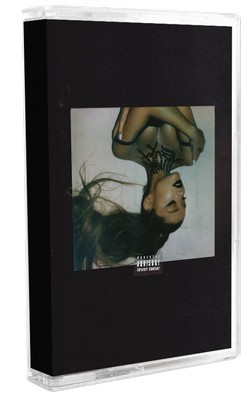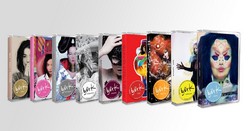Get out your winding pen and cassette player, because tapes are making a big come-back with modern musical artists and audiences.
The question is: why now, and why the sudden return of the vintage tape-recording device?
Also known as a compact audio cassette or musicassette, a cassette tape is an analog magnetic tape-recording format for audio capture and playback.
Developed in 1962 Belgium by Dutch technology company Philips, cassette tapes defined music listening habits of the 70’s and 80’s as an easy, portable change from the bulkiness of records and the unpredictability of radio.
Players like the Sony’s 1979 Walkman, stereo tape decks, and boom-boxes made selecting tracks for parties, leisure, or on-the-go listening even more popular.
The physical appearances of the cassette tape (with it’s compact, boxed shape and two holes), as well as that of the boom-box, became distinct marks of their eras in time: gold-chained hip-hoppers carrying big stereos on their shoulders and neon-sweatband-clad joggers with cassettes loaded into their Walkmen.
Now, who exactly brought back this taste of vintage life by resurrecting the cassette tape in the 2010s?
Well, pop princess Taylor Swift did, with her Grammy-award-winning album appropriately titled 1989 from 2014.
So did diva Ariana Grande, with her 2018 comeback Sweetener, which also nabbed a good deal of Grammy wins. Musical icon Björk is set to release all nine of her albums on multicolor cassette tapes for April 2019, joining the likes of Justin Bieber, NWA, She & Him, Weezer, and more.
Now, “alternative” retailers like Urban Outfitters are selling cassette versions of popular albums to trendy consumers.
Two companies, which were thought to have been buried with the unofficial death of cassette tapes in the early 2000’s, are now at the helm of the so-called revival tour: Mulann in western France and the National Audio Company in the American Midwest.
While it’s good business for the few companies involved in processing, the looming domination of Apple and overall smartphone music stores will predictably squash any overwhelming widespread return of the cassette tape.
Stuart Rosenberg, Ph.D., Chair of the Department of Management and Decision Sciences, spoke on the cassette tape comeback: “It’s nice that there’s something of a revival in the marketing of popular music on cassette tapes. But let’s make no mistake: this is a niche market.”
 Rosenberg, who teaches a course titled How Rock and Roll Shaped America, continued, “While they may have been convenient to store because of their relatively small size, they were inferior to [vinyl] LPs for a lot of reasons: First, it was harder to appreciate album covers and liner notes on a cassette.”
Rosenberg, who teaches a course titled How Rock and Roll Shaped America, continued, “While they may have been convenient to store because of their relatively small size, they were inferior to [vinyl] LPs for a lot of reasons: First, it was harder to appreciate album covers and liner notes on a cassette.”
“Second, cassette tapes broke too easily. And third, the sound quality wasn’t nearly as good,” he added.
So if the audio quality of cassette tapes has long been outdated, and there are even more quickly-accessible music listening platforms, what really is the appeal of many artists looking to the cassette tape?
The likely answer is not necessarily surprising and can be described in just one word: NOSTALGIA.
Chloe Barone, a junior communication student commented, “I think it’s a novelty for most people. It’s also the appeal of keeping up with the vintage aesthetic and always having the next ‘cool’ thing, just like with the return of the record player.”
In the past few years, there has been an apparent resurgence of throwback fashions for the international consumers of today.
Tiny, rounded sunglasses are warped in from the 90’s, 80’s-style shoulder-pads rock the red carpets of various awards seasons, and dungaree jackets and flare jeans from the 70’s adorn the bodies of many a fashion icon in the media today (look to Kendall Jenner, Gigi Hadid, Zendaya’s Tommy Hilfiger campaign, and more).
The use of vintage tech, like the cassette tape and record players, might just be another fashion-over-function scenario.
It’s an attempt to defy the rapidly-accelerating advancements in today’s electronics; whether for trend or for genuinely preference of an analog medium (just as some prefer the feel of a paperback or hardcover book over an e-book).
Considering this, it can be assumed that with the vast existing options we have today, the resurgence of the cassette in modern music is predominantly for the nostalgia factor and appreciation of an era that has passed.
Rosenberg concluded, “I had hundreds of cassettes that I ended up throwing out in the 1980s when compact discs were introduced. I also threw out my cassette player.”
IMAGE TAKEN from store.universalmusic.com
IMAGE TAKEN from electronicbeasts.net




